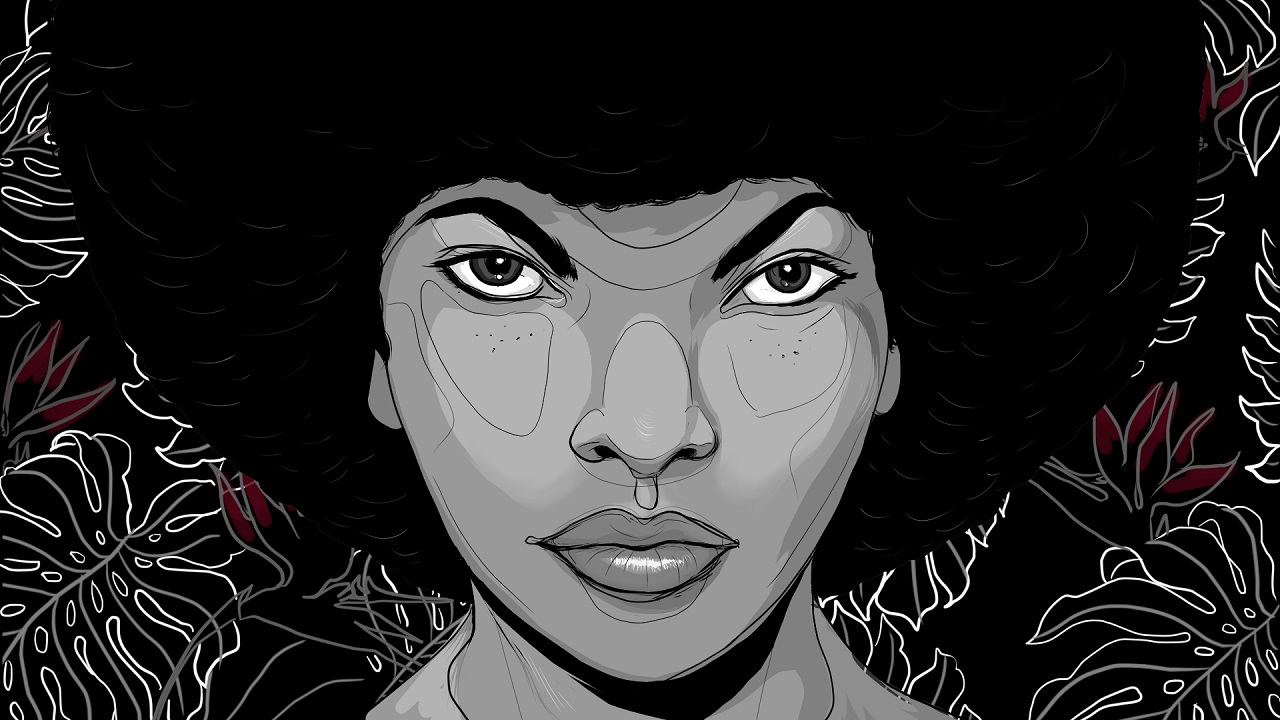Sunset is a game in which you fall in love with somebody you never meet - as the passion rises, the city outside explodes and burns. We were super excited about that idea, but we also wanted to reach more people with Sunset, so we did some research and added a million other things.
The original idea for what became Sunset is almost as old as our studio. We always design together and decide on the themes to explore and the atmospheres to evoke together, and Sunset is no different. Ten years ago, we wanted to make a first-person game in which you play some sort of invisible ghost, changing things in an apartment by night that influenced the lives of the inhabitants during the day. A few years later, after realising that one of the things we like most about games was well-defined characters in well-defined environments, the main character of “The Apartment” became an immigrant cleaning woman.
More years passed. Years in which we made The Path, Fatale, and Vanitas, as well as all sorts of prototypes before Bientôt l’été and Luxuria Superbia. We were preparing to continue our merry quest for adventure in video game creation land with An Empty World and The Book of 8 when we suddenly noticed that lots of people had started paying attention to the kind of games we really liked: games where you are immersed in the atmosphere of a simulated environment with the freedom to explore.
On closer inspection, we noticed that the most appreciated games in this new genre - if that’s what it is - had something in common: a first-person perspective. Our love of characters had meant that we never used first-person, except for the spirit in Fatale, but we remembered this old idea for “The Cleaning Woman In the Loft”, as the idea was called in the wiki where we keep all our notes, and figured we should give it another chance.
We immediately started imagining explosions and fire and smoke, maybe we are used to seeing the first-person perspective in shooter games. We thought this violence would mesh well with a romantic story. There would be a sprawling city on the other side of the windows and as the protagonists fell in love, the fires in the city would express the rising passion in their hearts.
Then we did some more research.
Seeking And Finding
As we wanted to work within a relatively established area of the industry, we started reading up on what people enjoyed in particular about these games. We’d already learnt the hard way that our own love of games rarely aligns with others. We didn’t want to make the old mistake of working purely on instinct and then struggling to understand why players didn’t get it.
Scouring forums and blogs and reviews, one thing became abundantly clear to us: if a game doesn’t focus on action or competition, it needs a compelling story. This might seem obvious to most of you but we were quite astounded by this discovery (it just goes to show one should never underestimate the stupidity of an artist). We’d never actively created a narrative for our games before - even though we’ve always been labelled as creators of narrative games and (duh) the name of our studio is Tale of Tales (that’s two instances of “tale” in one name!). We’re usually content to just explore a situation without any real storytelling or plot advancement, or much of a backstory for that matter.
We’d always been reluctant to write stories because we were never confident in our own writing skills. In practice, Auriea tends to direct the visual elements at Tale of Tales, while I make them move and make sounds. With that in mind, we adopted the role of students and began learning to become writers, at least for the purpose of this one project. There’s an ocean of advice for aspiring writers on the internet. It’s like everybody wants to be one and everybody either really needs to give or receive information on how to become one and be a good one. It made our heads spin at first, but then we found the formula.
The Secret Formula
A little program called Contour caught our attention. We were simultaneously amused, aroused and titillated by the confidence with which its creator, Jeff Schechter, proclaimed to offer the exact recipe for successful scripts. He didn’t promise that a story following this recipe would be successful but he did convincingly demonstrate that most successful films and novels could be broken down to fit within the structure the program was built around.
At its core the Contour method is a classic three-act structure broken down into 44 explicit plot points. Each of these plot points covers a specific message and together they build a story arc. Now that we’re acquainted with this system, we see this structure everywhere. It’s very pervasive and very powerful. Knowing and recognising the formula doesn’t prevent these stories from having their intended effect on us emotionally - it just works!
I’m not going to claim that our story will work. But Contour did offer us an almost paint-by-numbers way of writing for Sunset. We had already collected a lot of ideas for characters, situations and events, many of them recorded during lonely car rides between our home and Paris where Auriea was attending a life drawing workshop. But now we were able to structure these into a story that had a chance of making some sense, if only emotionally.
This is why Sunset consists of 44 sessions: one for each plot point. According to the formula, in the first act, the protagonist must be an “orphan”, somehow separated from their community, different, maybe an outcast. Since our story needed to serve a first-person game, we immediately ran into the question of who the protagonist is. The player character is obviously the most important one but since they are controlled by the player, we can’t force their story arc too much. So we decided to focus on the unseen owner of the apartment as the primary character in our three-act story. Although, Angela and Gabriel do find themselves in a similar situation, so they share this role a bit.
Both Angela and Gabriel are symbolic orphans. She’s an immigrant whereas he has been removed from his social position and separated from his family. During the first act, the villain must be introduced. In Sunset, this is the ruthless dictator Generalísimo Ricardo Miraflores. Emotional tension between the protagonist and the so-called “stakes character” must also be established (i.e. potential romantic interest), specifically a result of a threat from the villain. This is an area where Gabriel and Angela share roles: they are concerned about each other as both suffer in different ways and can both help one another.
In the first part of the second act, the protagonist becomes a “wanderer”. We don’t want to spoil the story, but let’s just say that people and things are moving around at this point in Sunset. This part of the story ends with the protagonist figuring out a way to defeat the villain.
In the second part of the story, the protagonist becomes a “warrior” and the fight is on. The villain is confronted and the fancy apartment becomes a war zone, so to speak. At the end of this part of the story, things seem completely bleak and desperate. We feel that there is no way that the protagonist can ever defeat the villain.
But then he becomes a “martyr”; he gives up on his old ideals and principles, embracing the knowledge he has acquired along the way. And thus the protagonist conquers not only the villain, but also the hangups that were preventing him from leading a full life. There you go, we just spoiled the story of Sunset for you!
Not really.
See you next week!





Pingback: The tale of the tale of Sunset | SUNSET()